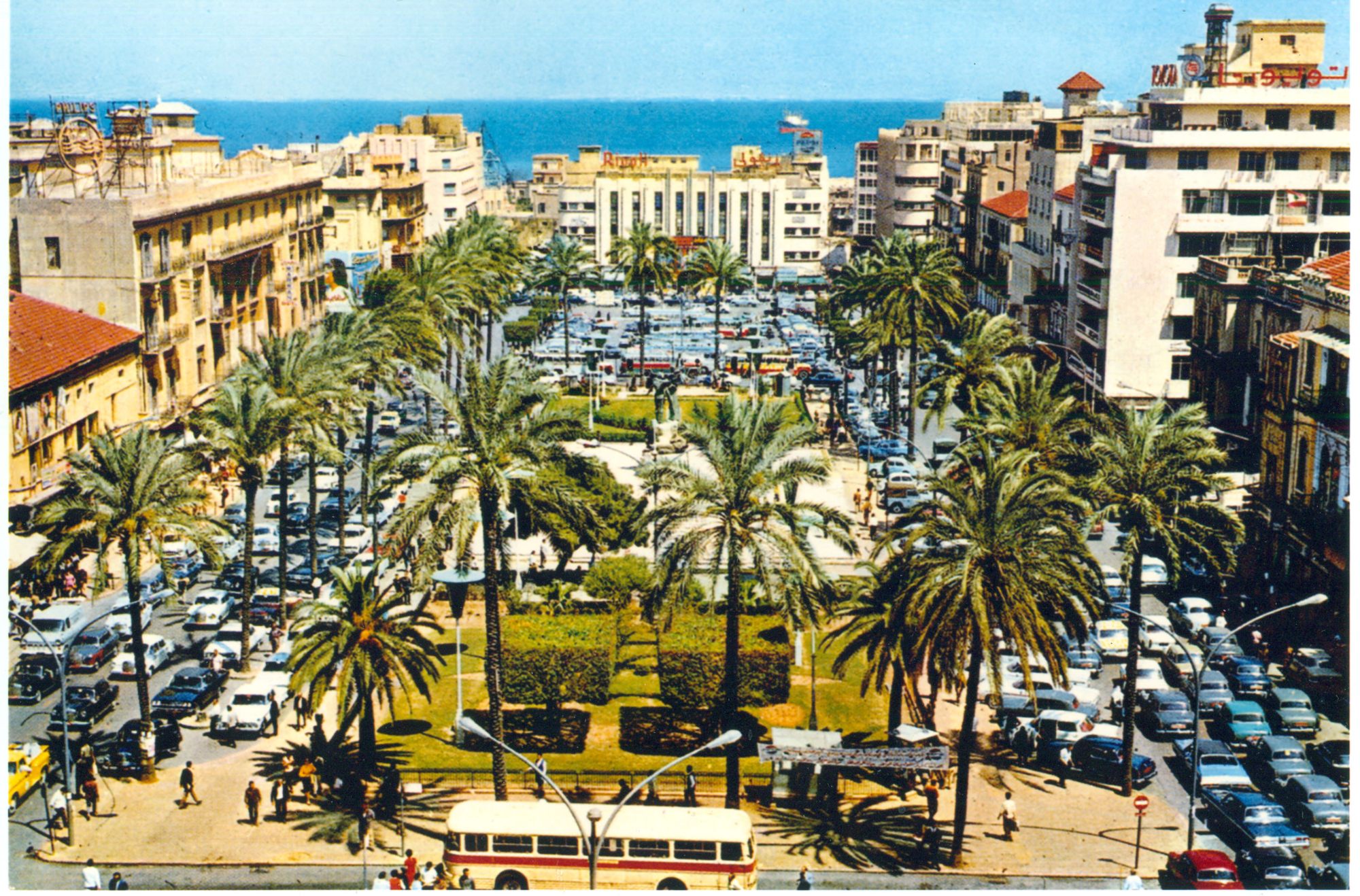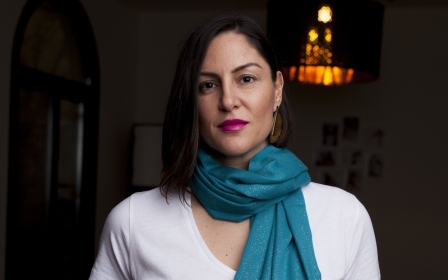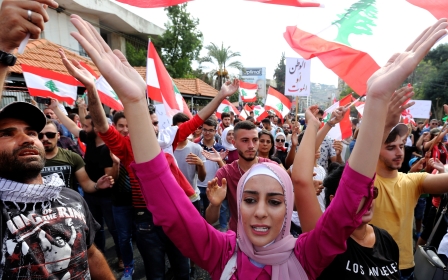Meet the 'guerrilla foresters’ trying to bring green spaces back to Beirut

On a sleepy Tuesday morning, Martyrs’ Square stands temporarily empty of the hundreds of thousands of protesters who have made downtown Beirut the centre of their uprising since 17 October.
For nearly three weeks, Lebanese have taken to the streets across the country to denounce the political class' corruption and grip on power, amid an ever-worsening economic crisis.
But that morning, only a handful of people are present, and they are prising heavy concrete flagstones from the pavement and digging into the topsoil. Near the volunteer diggers, a variety of native Lebanese trees sit in pots.
Soon they will be placed into the freshly dug holes where the planters hope they will become self-sustaining within two years. This symbolises a physical manifestation of the protesters’ ambition to reclaim the city’s public spaces.
Due to rampant privatisation and quasi-nonexistent urban planning, Beirut has few public spaces that are not at risk of vanishing, and even less vegetation.
The Lebanese capital is estimated to have 0.8 square metres of green space per resident - far below the World Health Organisation’s (WHO) recommended 9 square metres per capita.
The volunteers are led by Adib Dada, founder of theOtherDada, an environmentally focused architecture firm.
The 'Miyawaki method'
This isn’t the first project of its kind that he’s led. Earlier this year, his team planted 800 trees and shrubs on the concrete banks of the overbuilt Beirut river, but this project is different. While in the past he’s made sure to get all the necessary permissions, this time Dada and his volunteers have not bothered.
“We decided since we’re in revolution mode, let’s just take over these empty spaces and plant in them,” the architect told Middle East Eye.
'Since we’re in revolution mode, let’s just take over these empty spaces and plant in them'
- Adib Dada, architect
His group is using a technique known as the “Miyawaki method”, after its pioneer, a Japanese botanist. Through this process, seedlings from a wide variety of native trees are planted, which then compete with each other for minerals and sunlight, resulting in a diversified natural forest.
The technique has been used in large cities across the globe to mitigate some of the harsh effects of dense urban environments. The extensive use of concrete and glass in cities like Beirut raise the local temperature, increasing demand for air conditioning units and consequently increasing pollution.
“Urban afforestation is the best way that cities have to deal with climate change,” Dada explained. “It’s a grassroots effort. We’re reappropriating our public spaces [with] the kind of greenery that we want, in a sustainable manner.”
The afforestation project, as well as similar projects to reclaim the centre of the city such as the boom in street art, “are all manifestations that people want this space back,” said Mona Harb, a professor of urban studies and politics at the American University of Beirut.
Of Martyrs’ Square she said, referring to the civil war that devastated the country between 1975 and 1990: “Given the sterility of what it has become with the post-war project - a roundabout surrounded by infrastructure - it’s a way to reclaim it as a place of meeting.”
Nevertheless, Harb cautioned that sustaining the reclamation of the space beyond the protests would be a challenge, given that the downtown area is largely owned by private real estate companies.
Dada is conscious that his group’s hard work may ultimately be undone by the authorities as a result of not having gone through the proper channels, but he hopes the fact that the project will eventually be self-sustaining will act in their favour.
“It should be the perfect solution for the municipalities. We know they never have money,” he said.
Cooperation and learning
Community action schemes like Dada’s have won diverse followers.
“This is a great project. Everyone’s cooperating with each other,” said a 31-year-old man, spade in hand, who requested not to be named.
The man was born to a Syrian father and a Lebanese mother but has the nationality of neither. Having fled Syria when his father was killed - he suspects by the government - the recent uprisings inspired him to participate in some of the community projects that have sprung up around Martyrs’ Square.
“It’s a great project. Everyone’s cooperating with each other,” he said of the urban afforestation programme. “People have developed. These protests have taught people a lot.”
For Sara, a 21-year-old Beiruti who graduated from the American University of Beirut in the spring, her participation in the project is a statement about her living conditions.
'[Martyrs' Square] was the land of the dead - a ghost town'
- Sara, volunteer
“We’re protesting for different causes in the country,” she explained. “It’s not just about corruption and economics, it’s also about the environment and the very bad conditions that are affecting our daily lives.”
Like many of her generation, the young graduate had been considering emigrating to find work, seeing few prospects in her home country despite her landscape architecture degree; but she is now reconsidering.
“I would definitely love to stay here if there’s an opportunity. [The protests] did give me a bit of hope,” she added.
Sara was inspired by the way Martyrs’ Square itself has changed so tangibly during the protests. “It was the land of the dead - a ghost town. It’s the first time we see people actually making use of the space in so many creative ways,” she said.
Middle East Eye delivers independent and unrivalled coverage and analysis of the Middle East, North Africa and beyond. To learn more about republishing this content and the associated fees, please fill out this form. More about MEE can be found here.





